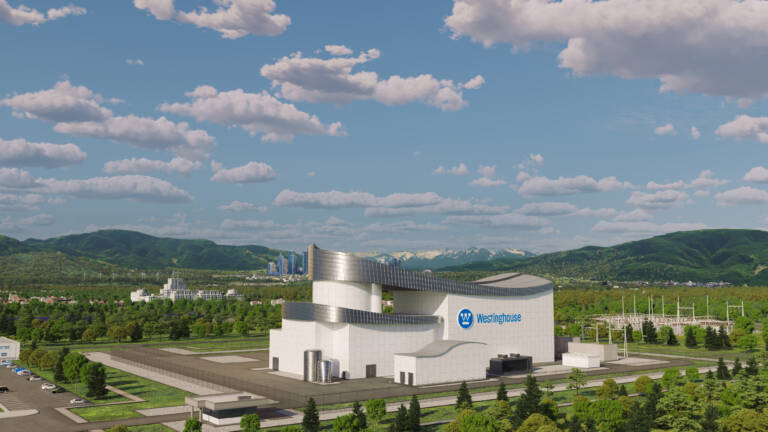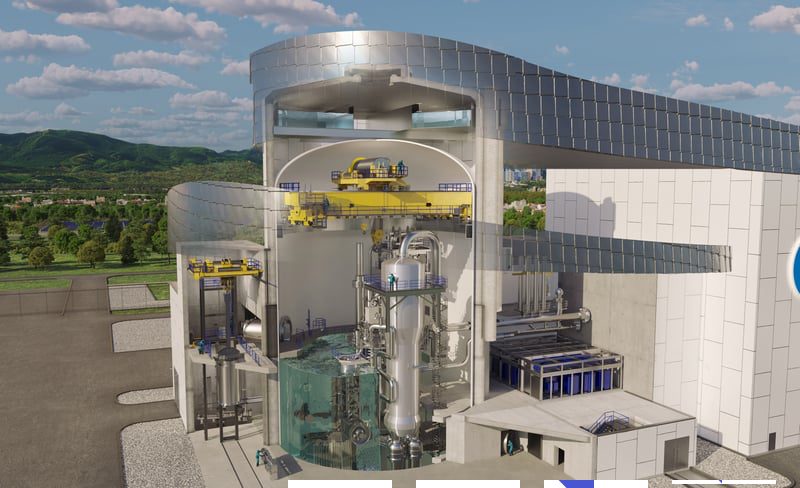Estonian report states that for the state from the sixth year onwards revenues would exceed expenditures and that the positive social impacts would be considerable

According to the report prepared by the National Working Group on Nuclear Energy, once the program to build a new nuclear power plant in Estonia begins, revenues for the state budget would exceed the costs associated with construction starting from the sixth year of the project.
According to the authors of the report, this would happen before the plant comes into operation, which would take 11 years from the decision to build it, and would arise from social taxes to be paid to employees, as the payroll continues to grow, and from the impulse to the local economy that construction entails. Practically, the Keynesian expansionary effect of spending would be such that the investment would generate positive flows even before the plant comes into operation.
The 164-page report states that: “ Revenues in the state budget would begin to exceed costs during the construction phase of the nuclear power plant starting from the sixth year of implementation of the nuclear program .”
“ This is primarily due to employment taxes paid by the project developer's growing number of employees, as well as the revival of regional economic activity caused by construction activities. In the operational phase, starting from the eleventh year, state revenues would permanently exceed costs by at least 19 million euros ,” continues the report, published on Saturday.
In a negative scenario, in which state budget costs would be double those currently expected and revenues half as high, revenues would still exceed costs by at least 5.5 million euros immediately after the plant comes into operation.
State budget costs related to the implementation of the nuclear program include those imposed by the regulator, those related to the legal framework and policy-making, the creation of technical and relief capabilities, and skills development, the report said .
In the years following the decision to introduce nuclear energy production in Estonia, until the start of electricity production at the proposed nuclear power plant (with a implementation time of 9-11 years), the total state budget costs for the regulatory framework and educational programs, at today's prices, would amount to 73 million euros.
The lion's share (62%) of these expenses is made up of the regulator's staff costs, followed by the costs of education and research programs (17% of the total).
The construction of the SMR would reduce regional inequalities
The analysis of the socio-economic impact of the nuclear power plant and its construction finds that the impact would be more positive for regions with a declining population and lower-than-average income, located further away from Tallinn. Localities such as Varbla, Loksa, Kunda and Toila are mentioned (all are located within a radius of 170 kilometers from the center of Tallinn, while the closest, Loksa, is less than 70 kilometers from the capital – ed.), which are also potential locations recently recommended in a spatial analysis conducted.
Any nuclear power plant must be located near a large water source such as the Baltic Sea.
Regional inequality between different regions of Estonia would increase even more if a nuclear power plant were built near Tallinn.
According to the analysis, the construction phase would bring new residents to the region where it is located, and with them tax revenue and turnover for other private sector companies, including local ones, which in turn would encourage further investment in social infrastructure such as schools, recreational facilities and kindergartens.
Referring to data from nuclear plants of comparable size in other parts of the world, the report states that the number of employees of a small modular reactor (SMR) such as the proposed one could be between 75 and 400.
The construction of an SMR would be considerably preferable, according to the report, because the possibility of obtaining a temperature of the cooling liquids up to 950 degrees, as happens for this type of power plant, would allow this residual energy to be used to produce hydrogen by splitting the 'waterfall. We are obviously talking about reactors with molten salt cooling, which have much higher operating temperatures.
The high temperatures generated as output: Up to 950 degrees Celsius in SMRs, compared to around 300 degrees in conventional plants, increase the efficiency of electrolysis, reducing the cost of hydrogen production and potentially making the process more cost-effective, we read in relationship.
Another key area of use of nuclear power plants is the provision of district heating, redirecting the heat produced to district heating systems and thus supplying nearby settlements with thermal energy during the heating season (October to March inclusive).
Risks and challenges
At the same time, the report notes that the introduction of nuclear energy comes with a number of associated challenges and risks, which need to be considered and addressed.
The report says the most important of these concerns the safety of nuclear power plants, a major national concern.
“Although accidents with serious consequences are extremely unlikely, nuclear power plants must be built and operated to the highest safety standards and it must be ensured that all risks are minimised,” the report reads.
The second aspect concerns waste management, given the radioactive waste that nuclear energy produces and which requires safe long-term storage.
The summary of the report states that: “Although the volume of waste generated is small, Estonia should develop a radioactive waste management strategy and consider building a final storage site for spent nuclear fuel.”
The task force recommends an SMR
An SMR is feasible in Estonia, as the introduction of nuclear energy would support the achievement of climate goals, security of supply and stability of the energy system in Estonia, all important issues that Estonia has faced in recent months and years .
The final report concludes that a 400 MVA (megavolt ampere, equivalent to 400 MW – ed.) SMR would be feasible in Estonia. However, since the first reactors deemed suitable for Estonian conditions will only come into operation worldwide at the end of the current decade, Estonia will have to wait to make its final technological choice once the first such plants are entered into operation.
Compared to large nuclear power plants, SMRs occupy a relatively small surface area. Thanks to this size, they occupy about a tenth or a quarter of the area required by a traditional nuclear power plant, which means that their area requirements can be measured in tens of hectares, not hundreds of hectares.
Compared to existing reactors, the designs used in SMRs are simpler. Security is often based on passive systems. This means that in these cases, human intervention or external energy sources are not needed to shut down the systems, since passive systems rely on physical phenomena such as convection and gravity. These measures, in turn, help eliminate or significantly reduce the possibility of radioactive substances entering the environment.
At the same time, according to the report, it is important to base the choice of technology on experience and reliability of the fuel.

Thanks to our Telegram channel you can stay updated on the publication of new Economic Scenarios articles.
The Estonian Report article states that from the sixth year onwards for the state the revenues would exceed the expenditures and that the positive social impacts would be notable comes from Economic Scenarios .
This is a machine translation of a post published on Scenari Economici at the URL https://scenarieconomici.it/report-estone-afferma-che-per-lo-stato-dal-sesto-anno-le-entrate-supererebbero-le-uscite-e-che-le-ricadute-sociali-positive-sarebbero-notevoli/ on Sun, 31 Dec 2023 08:00:51 +0000.

